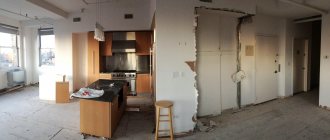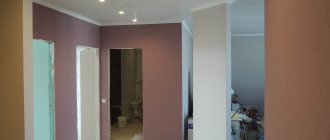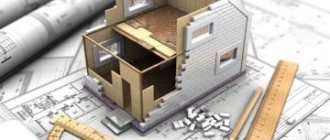Is it possible to transfer to non-residential property without the consent of the owners?
It will not be possible to do without the consent of the owners. If the apartment is in shared ownership, any operation with it requires agreement between all owners (Article 246 of the Civil Code of the Russian Federation). The same applies to joint property of spouses: it will not be possible to change the status of housing without the consent of the husband or wife if it was acquired from the moment of marriage.
In addition to the consent of property owners in common ownership, other consents are required:
- From the owners of adjacent apartments.
- From tenants-owners of real estate in an apartment building.
Note: you will not have to coordinate the transfer of housing to non-residential premises with your neighbors only if it is a private residential building. All that is required is the consent of all owners.
Take the survey and a lawyer will tell you for free how to avoid mistakes in an apartment purchase and sale transaction in your case
The need to obtain a sample building permit from neighbors
Registration of the results of illegally carried out construction work is often carried out in court and requires significant material, time and psychological costs from the violator. By inquiring in a timely manner which construction work requires the consent of neighbors, you can avoid unnecessary litigation.
In apartment buildings, redevelopments that require permission from neighbors include:
- Dismantling the entrance doors to the apartment and installing new ones.
- Changes to the facade of the building, reconstruction of the balcony.
- Increasing the area of the apartment due to the common ownership of all residents.
- Changing the location of window and door openings, etc.
When building on your own separate plot, it is required to obtain the consent of neighbors if:
- A residential building is being built at a distance of less than 3 meters from the neighboring property.
- An outbuilding is being built at a distance of less than 4 meters from the neighbor’s property.
- A non-residential building is being built at a distance of less than 1 meter from the neighboring property.
- The windows of the constructed house will be located at a distance of less than 6 meters from the windows of the neighbor's house.
- The distance between buildings on your and your neighbor's property is less than that required by fire safety rules (from 6 to 15 meters depending on the material of the buildings). Read more about the rules for the location of buildings on an individual housing construction site here.
If any of the above-described construction work has already been carried out, but permission to carry it out has not been received, obtaining the consent of the neighbors is also necessary to formalize the changes. Having a building permit from your neighbors will greatly simplify the process of legalizing the redevelopment of an apartment or a new building on your own site. Find out how to legalize unauthorized construction in the article https://realtyinfo.online/4622-administrativnyi-sudebnyi-poryadok-legalizatsii-samovolnoi-postroiki.
Consent of owners to transfer to non-residential
Owners are considered to be citizens who have ownership rights to a share. All changes in the apartment must be coordinated with them, regardless of the size of the shares. Consents are drawn up from everyone in simple written form, but are subject to notarization.
Legal advice: regions have their own sample applications for transferring the status of residential premises to non-residential. The co-owner can express consent to the procedure immediately in the application, if so provided in the form. Usually the signatures of all owners are placed at the end. Then you won’t have to fill out a separate document.
Elena Plokhuta
Lawyer, website author (Civil law, 7 years of experience)
Contents and sample consent
The document must contain the following information:
- Full name, registration address, passport details of the owner giving consent.
- Full name, address, passport details of the second owner who will be involved in the procedure.
- Address, cadastral number, area of the apartment.
- Expression of consent to redevelopment and change in the status of the premises.
- Date of compilation and signature.
Sample consent
Consultation on document preparation
How to convert residential premises into non-residential ones?
How to convert non-residential premises into residential ones?
Document preparation
Permission from neighbors to redevelop an apartment can be obtained as a result of a positive decision at a general meeting of all homeowners (members of the housing cooperative) or after individual agreements with each apartment owner. It is allowed to draw up both a collective permit and separate individual consents of each owner. The document is considered valid and has legal force if it is signed by all necessary neighbors and all mandatory conditions are met during its execution.
Owners of their own plots need to obtain building permission only from those neighbors whose interests will be directly affected by construction. To draw up and formalize the consent of neighbors in most cases, it only takes a few minutes of conversation with neighbors and following the instructions described above for drawing up the document. Additionally, the document requires certification by a notary.
Redevelopment of residential premises located in an apartment building, regardless of what type it is, is permitted by law. At the same time, depending on the number of floors, the materials used by the builder, the wear and tear of the building, the floor where the apartment is located - some types of work can be carried out, but others cannot. Redevelopment should be understood as a complex overhaul, which should change the configuration of the room, the functional purpose of the rooms, so communications will certainly be affected.
Dear readers! The article talks about typical ways to resolve legal issues, but each case is individual. If you want to find out how to solve your particular problem , contact a consultant:
+7 (Saint Petersburg)
APPLICATIONS AND CALLS ARE ACCEPTED 24/7 and 7 days a week.
It's fast and FREE !
It is possible to change the general areas and parts of structures, but this is due to some features. To begin with, the apartment owner must understand that the legislator requires obtaining permission to carry out construction work in the apartment itself, and for this it is necessary to prepare a project.
The work must be carried out strictly according to the project, and already at the initial stage, designers can offer the owner only a list of permissible changes. But they still need to be agreed upon with the Housing Inspectorate and the Interdepartmental Commission (IMC), other regulatory authorities (SES, Ministry of Emergency Situations, Energy Supervision, Gas Industry, etc.).
There is a list of common property that can be affected by the owner when redeveloping his premises, for example:
Read more Mortgage conditions for secondary housing in Sberbank
Sample consent of neighbors for redevelopment
Consent of neighbors of adjacent apartments
Art. 23 of the Housing Code of the Russian Federation requires the registration of consents from all owners of apartments that have adjacent walls with housing being transferred to non-residential premises: on the side, above, below. If the property is not located on the ground floor, you will need permission from the owner of the non-residential premises below.
Note: you can transfer housing to non-residential premises if it is on the ground floor. The transfer of objects on the upper floors is allowed if the apartments located below are non-residential. If at least one owner refuses to sign the consent, it will not be possible to transfer the premises to non-residential use.
Contents and sample consent
The form of consent is usually established by regional authorities. What information does it contain:
- Full name, passport details of the citizen signing the document.
- Address of the apartment whose owner gives consent.
- A reference to the fact that the citizen’s housing is adjacent to the real estate being transferred.
- Statement of consent to transfer.
- Signature, date of compilation.
Sample consent
Consultation on document preparation
Are you tired of reading? We’ll tell you over the phone and answer your questions.
Consent of apartment owners in MKD
This consent is drawn up based on the results of the general meeting and is reflected in the minutes. In the future, it will be needed by the administration when reviewing documents from the owner of the property, whose status is changing.
In order to agree on the issue of transfer with residents, a number of conditions must be met under which the results of the meeting are considered positive:
- If a house has two or more entrances, a quorum requires: 2/3 of the votes of the owners of the entrance in which the housing being transferred is located. And a minimum of 50% of the votes held by the owners of adjacent premises. A minimum of 50% of the votes from meeting participants is required to make a decision.
- If the house has one entrance, a quorum requires at least 2/3 of the votes of the total number of meeting participants, and half of the votes that belong to the owners of adjacent apartments. The decision is made by a majority vote of the total number of those present (Clause 1.2, Article 46 of the Housing Code of the Russian Federation).
Note! According to Art. 48 of the Housing Code of the Russian Federation, the number of votes of owners is calculated taking into account the area of their apartments. For example, if a house has an area of 70 sq.m., the owner has 70 votes. But most often everything is calculated as a percentage based on quorum principles.
Contents and sample protocol
In order for the minutes to be accepted by the administration, it must contain complete information about the meeting and residents:
- House address, document number, meeting location.
- Area of residential and non-residential premises.
- Number of apartments and owners.
- Agenda: reconstruction, redevelopment, redevelopment, transfer of residential premises to non-residential premises.
- Full name, addresses of participants.
- Number of votes "for" and "against".
- Signatures of the chairman and secretary of the meeting.
Consultation on document preparation
Documents for transferring residential premises to non-residential premises
Until June 2021, owners of apartments being converted into non-residential ones only had to submit to the administration applications, title documents, floor plans, redevelopment projects, floor plans with technical descriptions.
Now, in addition to the above, you need to submit:
- minutes of the general meeting;
- consent of all owners of adjacent premises;
- consent of owners of shares in property rights.
Important! The consent of the owners of adjacent apartments can be formalized in one document. Some neighbors try to cheat and make money, and ask for money in exchange for a signature. Unfortunately, you cannot be held accountable for this. Even according to Art. 163 of the Criminal Code of the Russian Federation, liability occurs only in cases of extortion involving the use of violence, threats and other illegal actions.
Lawyer's answers to private questions
Is it possible to do without the minutes of the general meeting?
Theoretically it is possible, but practically not. If an apartment is transferred, in any case the owner will have to carry out redevelopment or reconstruction, affecting common property: for example, to arrange a separate entrance. It is impossible to carry out work according to the law without taking into account the opinions of other owners.
I wanted to open a grocery store in an apartment building, but I didn’t get the consent of the residents, many were against it. Can anything be done about this?
No. Without the permission of the owners of other apartments, based on the results of the general meeting, it is impossible to transfer a separate premises to non-residential premises and make redevelopment.
Is 100% consent of the owners of an apartment building required if I am going to transfer the apartment on the ground floor into a commercial space?
No. 100% is needed only if, as a result of the redevelopment, the total property of the apartment building will be reduced and the load-bearing structures will be affected. Or when building an extension on an adjacent plot of land. In other situations, a majority vote is sufficient.
I'm going to open a hostel on the first floor of an apartment building, I need to transfer the apartment to non-residential. The HOA allowed this to be done. Do I need to obtain the consent of the owners of the remaining apartments, or is it not necessary?
Yes need. It won't be possible to do without the other owners.
I have an apartment in shared ownership, ½ each. I don’t know where the second owner is; I haven’t communicated with him for a long time. Is it possible to convert housing into non-residential without his participation?
No. The consent of the second owner is required if he is not declared missing. We'll have to look for him.
Responsibility for illegal reconstruction
If redevelopment in the apartment is done without prior permission, it is considered uncoordinated and must be legalized. For illegal actions, the owner must be punished in the form of penalties; their amount differs for individuals and legal entities. But, having paid the fine, the owner cannot be exempted from preparing documents and submitting for approval. The owner has the right to make a decision to legitimize his actions independently, after the completion of the repair, if he did not do so before it began.
If the order of the controlling body is not fulfilled within the established time frame that it sets aside for repairs, then, according to the housing code, the apartment is allowed to be put up for public auction and sold.
When the premises are sold, legal costs and re-repair costs will be deducted from the proceeds, and the remaining money will be returned to the former owner. He will be preliminarily deprived of his rights to the property because he refused to legitimize the redevelopment.
If the user of the premises and the violator turns out to be the main tenant living in municipal housing, he will be evicted on the basis of forced termination of the social tenancy agreement.






